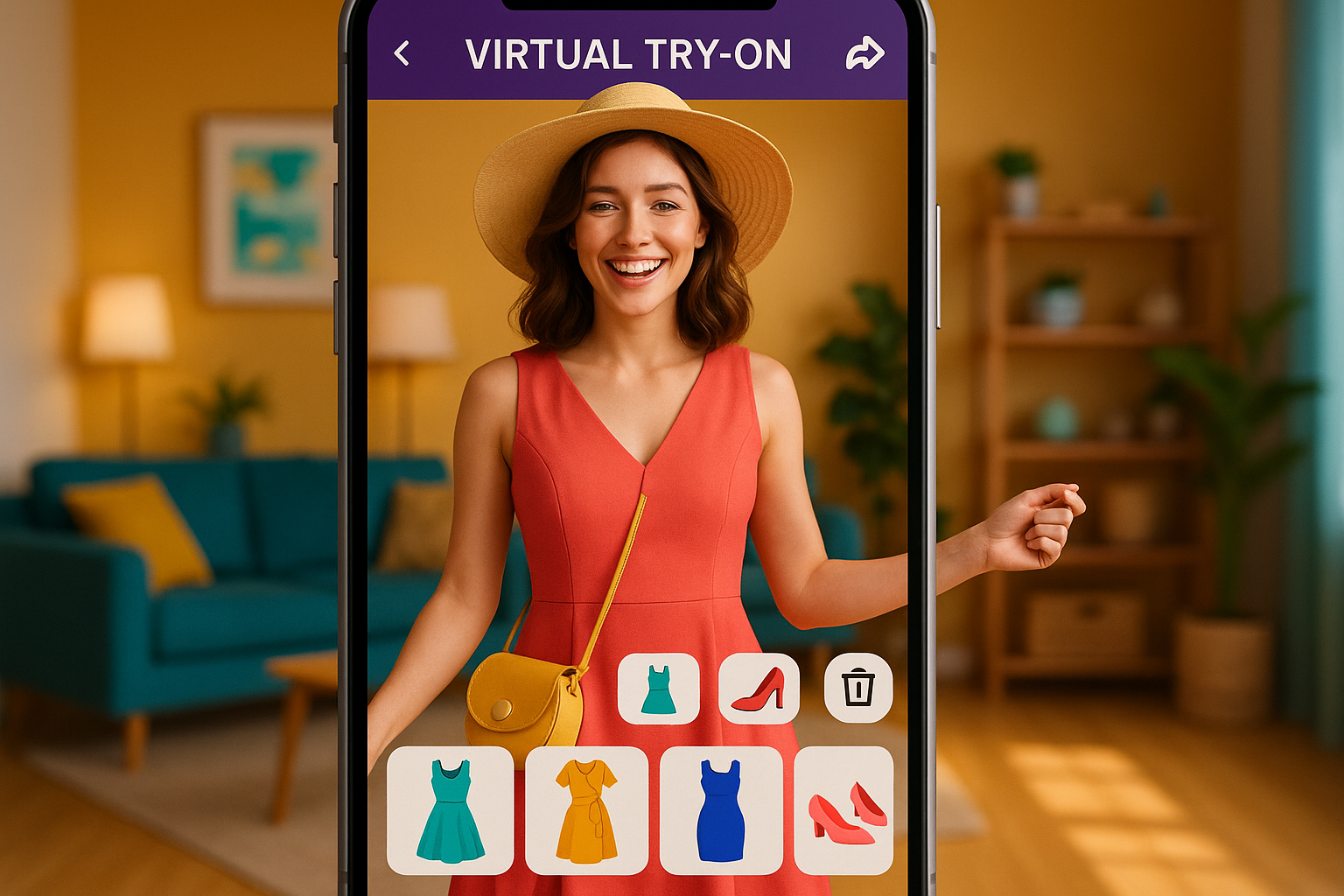Service that suites your needs
Our custom software development process revolves around an AI-centric approach, enhancing user experiences and delivering highly efficient solutions through advanced artificial intelligence technologies.
.png?width=292&height=132&name=Image%20(3).png)
Our custom software development process revolves around an AI-centric approach, enhancing user experiences and delivering highly efficient solutions through advanced artificial intelligence technologies.
.png?width=292&height=132&name=Image%20(3).png)
At Phyniks, we combine AI and creativity to drive innovation. Our tailored solutions yield extraordinary results. Explore our knowledge base for the latest insights, use cases, and case studies. Each resource is designed to fuel your imagination and empower your journey towards technological brilliance.
.png?width=284&height=129&name=Image%20(4).png)
At Phyniks, we combine AI and creativity to drive innovation. Our tailored solutions yield extraordinary results. Explore our knowledge base for the latest insights, use cases, and case studies. Each resource is designed to fuel your imagination and empower your journey towards technological brilliance.
.png?width=284&height=129&name=Image%20(4).png)

A decade ago, online shopping was a leap of faith. Customers could only rely on static images, size charts, and product descriptions.
Today, technology has closed much of that gap. Virtual Try-on App development has moved from being a novelty to becoming a key driver of conversion in e-commerce. The numbers tell the story.
According to Shopify, 3D and AR-enabled shopping experiences can boost conversion rates by up to 94% compared to static product images.
Using AR fitting room technology and AI-powered visualization, shoppers can see products in real-time, on themselves or in their homes, before buying. This isn’t just a “cool feature.” In competitive markets, it’s becoming table stakes.
Retailers are quickly catching on. Statista estimates the global AR in retail market will reach $17.8 billion by 2028, driven largely by demand for immersive try-on solutions. And it’s not just fashion- furniture, cosmetics, eyewear, and even home improvement brands are making it part of their core sales strategy.
For businesses, this isn’t just about improving customer experience, it’s about increasing sales, reducing returns, and gaining valuable customer insights. And for consumers, it’s about making smarter, more confident buying decisions without ever stepping into a store.
A virtual try-on app lets customers “test” a product digitally. It uses augmented reality (AR), computer vision, and sometimes 3D modeling to superimpose the product, whether glasses, sneakers, lipstick, or a couch, onto the customer’s live camera feed or photo.
They can see how it fits, matches their style, or suits their space. No shipping back and forth. No guessing games.
Here are some benefits of Virtual Try-on Apps for businesses:
1. Enhanced Customer Satisfaction & Confidence
When customers can visualize a product on themselves, they buy with more certainty. This lowers buyer’s remorse and builds trust in your brand.
2. Reduced Return Rates & Increased Sales
Returns are one of the costliest problems in e-commerce. With better pre-purchase confidence, return rates can drop significantly, especially in fashion, beauty, and eyewear. That alone can justify investing in Virtual Try-on App development.
3. Boosted Brand Engagement & Social Sharing
Try-on experiences are inherently “shareable.” Many apps integrate direct social sharing, so customers post their looks on Instagram, TikTok, or WhatsApp. This doubles as organic marketing for your products.
4. Data-Driven Insights & Product Optimization
Every try-on session generates data, what’s tried most, what’s abandoned, what converts. This helps with e-commerce personalization and better inventory planning.
5. Cost Savings & Inventory Management
Virtual samples reduce the need for physical prototypes or showroom models. This is especially helpful in furniture and apparel where storing every variant is costly.
While Virtual Try-on App development is often associated with fashion retail, the technology is proving its value far beyond clothing. From beauty and eyewear to home décor and footwear, businesses across industries are using AR fitting room technology to tackle key buying barriers, increase engagement, and boost conversion rates.
Below, we explore five sectors where virtual try-on isn’t just “nice to have”, it’s fast becoming a customer expectation.
For clothing brands, sizing uncertainty is the biggest friction point in online shopping. Customers can’t physically try garments on, so they often hesitate to click “buy.” According to a study by BodyBlock AI, 91% of shoppers say accurate fit is the most important factor when purchasing apparel online.
This is where AR fitting room technology makes a measurable difference. By using a phone camera or desktop webcam, shoppers can see how a dress drapes, how a jacket sits on their shoulders, or whether a shirt length works for their frame. More advanced solutions even integrate AI-driven size recommendations based on a customer’s body measurements and past purchase data.
Example: H&M piloted virtual fitting rooms that allow customers to try on outfits digitally before purchase, helping them bridge the gap between physical and online shopping.
Eyewear purchases are highly personal, frame width, lens shape, and color tone all affect the final look. A pair that looks good on a website model may not suit a customer’s face shape at all. Virtual try-on tools solve this by enabling customers to test dozens of frames in a matter of minutes, without visiting a store.
The technology relies on facial mapping to position frames with precise scale and alignment, ensuring the virtual view is as close to reality as possible. This leads to higher buying confidence and fewer returns.
Example: Lenskart’s virtual try-on app scans a user’s face to create a 3D model, then applies selected frames with perfect proportion and angles. This feature has been a major driver of their high online eyewear sales and reduced product returns.
Cosmetics shopping online is notoriously tricky. Lipstick, foundation, or eyeshadow shades can look completely different depending on skin tone, undertones, and lighting. In fact, data from Perfect Corp shows that virtual makeup try-on can increase customer purchase intent by over 2.5x compared to static product images.
AI skin tone detection can adjust the rendering so colors appear more realistic, giving shoppers the ability to experiment with shades without physically swatching products.
Example: Nykaa offers AI-powered lipstick try-ons that allow users to test multiple shades instantly. Customers can explore options without visiting a store, making online purchases feel more confident and less risky.
Home décor purchases often involve high-ticket items, where a wrong fit or mismatched color can be a costly mistake. Virtual try-on in this context uses 3D modeling and AR to place furniture, artwork, rugs, or curtains directly into the shopper’s environment via their phone camera.
By visualizing items at true scale, customers can check whether a sofa fits in their living room, whether a lamp’s style matches the rest of the décor, or if a rug covers the intended area. This not only boosts confidence but also reduces returns for bulky, expensive products.
Example: IKEA Place lets customers “drop” true-to-scale furniture into their home using a mobile device. They can rotate, reposition, and preview items in real time, a major factor in IKEA’s online sales growth in recent years.
In footwear, size alone doesn’t guarantee comfort. Factors like foot width, arch height, and style preference play a big role in buying decisions. Virtual try-on solutions for shoes use advanced 3D scanning to capture the shape of the customer’s foot, then match it to the brand’s sizing data for a more accurate recommendation.
This technology is particularly valuable for sports footwear, where fit can impact performance and injury risk.
Example: Nike’s AR sizing tool scans a user’s foot with a smartphone camera, then recommends the correct size for each shoe model. This has helped reduce size-related returns and increased purchase satisfaction.
A well-built Virtual Try-on App isn’t just about flashy AR overlays, it’s about delivering a seamless, accurate, and enjoyable buying experience that builds customer confidence and drives revenue. Whether you’re targeting fashion, beauty, eyewear, home décor, or footwear, the core features below form the foundation of a successful build.
The heart of any virtual try-on experience is immediacy. Real-time AR visualization lets customers see a product on themselves or in their space, instantly, without lag or awkward delays. Whether they’re turning their head to check sunglasses from the side or walking across the room to see how a sofa fits, the virtual overlay stays perfectly aligned. This fluidity is what builds trust and confidence.
A convincing try-on requires highly accurate 3D product models. Your app should not only support photorealistic rendering but also manage a growing library of SKUs with ease. Efficient 3D asset optimization ensures smooth performance across devices without sacrificing detail. This is particularly crucial for brands with large catalogs or seasonal launches.
A great try-on experience should lead directly to a sale. Integrating the app with your e-commerce backend allows users to add items to their cart, view pricing and availability, and check out without leaving the try-on flow. It also enables inventory sync, promotions, and loyalty points to work seamlessly within the experience.
For apparel, footwear, eyewear, and even furniture, correct sizing is critical. AI-powered fit assistance can recommend the right size by analyzing user measurements, body proportions, or even past purchases. This reduces the guesswork and the costly returns that follow incorrect sizing.
By using e-commerce personalization, the app can suggest products that match a customer’s style, color preferences, or usage history. For example, if someone tries on running shoes, the app could recommend matching sports apparel or accessories in the same session.
Encouraging users to share their try-on moments on social media turns them into brand advocates. Built-in sharing buttons make it effortless for them to post images or videos, amplifying brand reach organically.
Behind the scenes, an analytics dashboard tracks which products are tried most, which convert, and where users drop off. This data not only informs marketing strategies but also guides inventory and product design decisions.
Consumers shop across devices, so a Virtual Try-on App should work on iOS, Android, and the web (via WebAR). Cross-platform compatibility ensures customers have the same experience whether they discover you through a mobile ad, a desktop browser, or a social media link.
The cost of Virtual Try-on App development can differ significantly based on:
| Level | Estimated Cost | What’s Included |
|---|---|---|
| Basic | $10,000- $20,000 | Simple AR overlays, limited product catalog, basic analytics. |
| Standard | $20,000 - $50,000 | Multi-platform support, larger catalog, 3D modeling integration, basic personalization. |
| Advanced | $50,000 - $70,000+ | AI size recommendations, high-quality rendering, full analytics suite, multi-language support. |
We recently developed a virtual try-on app for a mid-sized fashion retailer, fully integrated with their Shopify store. The app featured real-time AR try-on, AI-driven fit assistance, and direct checkout integration.
Results within 3 months:
This project proved what the numbers already suggest: when executed well, virtual try-on isn’t just a feature, it’s a profit driver.
At Phyniks, we see Virtual Try-on App development as more than coding AR overlays. For us, it’s about building revenue-focused digital experiences that merge technology, design, and customer psychology.
We work with fashion, beauty, home décor, and eyewear brands to create AR-powered shopping tools that actually convert.
From rapid prototyping with real-time AR to full-scale platform integration, we handle the entire build and deployment cycle. Our focus is on performance, scalability, and measurable ROI, not just delivering an app, but delivering growth.
If you’re ready to turn your products into an interactive buying experience, we’re ready to make it happen.
Contact Phyniks today
to explore how virtual try-on can elevate your brand.

Sign up for Links for Thinks — a weekly roundup of resources like this to help you uplevel your design thinking straight to your inbox
We'd love to hear from you! Whether you have a question about our services, want to discuss a potential project, or just want to say hi, we are always here to have meaningful conversations.